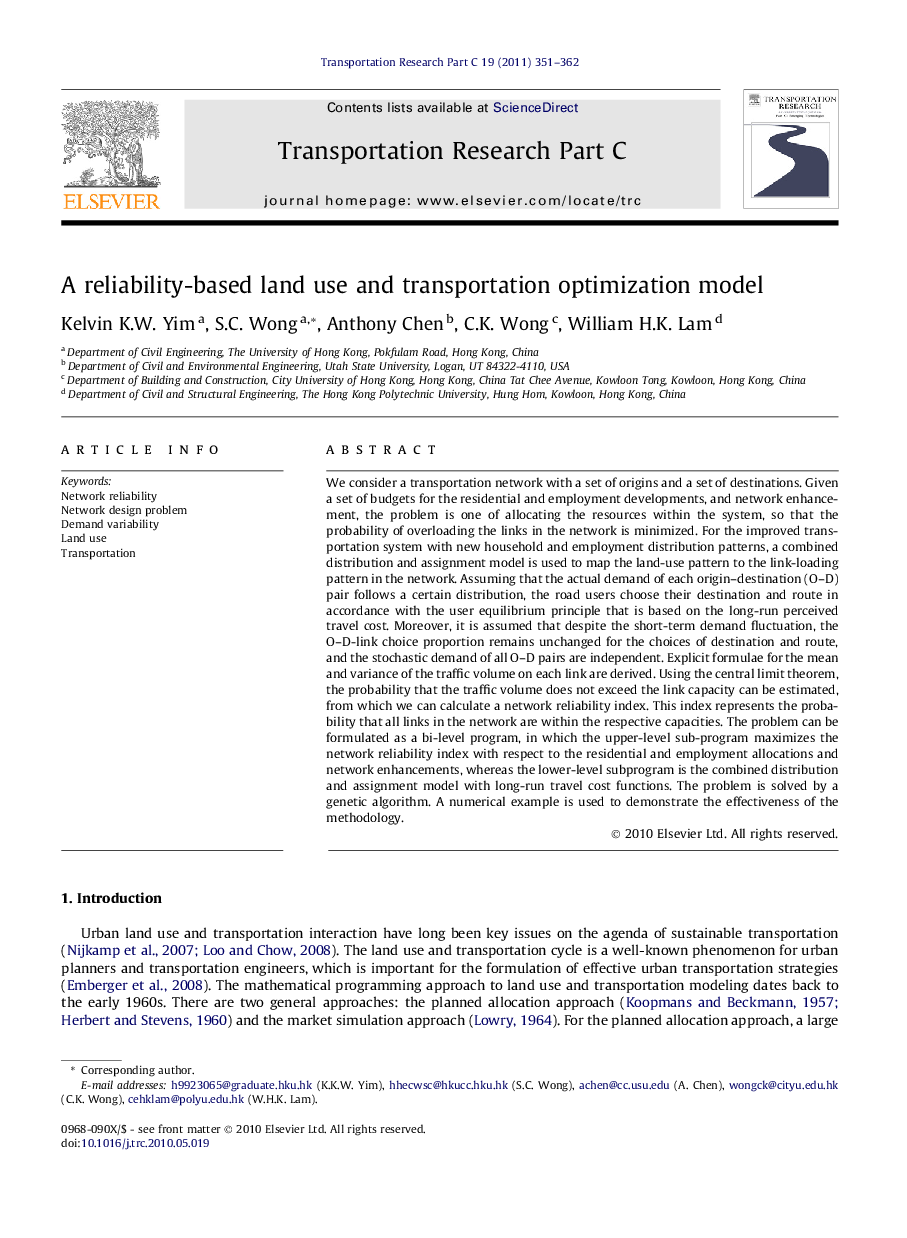| Article ID | Journal | Published Year | Pages | File Type |
|---|---|---|---|---|
| 525328 | Transportation Research Part C: Emerging Technologies | 2011 | 12 Pages |
We consider a transportation network with a set of origins and a set of destinations. Given a set of budgets for the residential and employment developments, and network enhancement, the problem is one of allocating the resources within the system, so that the probability of overloading the links in the network is minimized. For the improved transportation system with new household and employment distribution patterns, a combined distribution and assignment model is used to map the land-use pattern to the link-loading pattern in the network. Assuming that the actual demand of each origin–destination (O–D) pair follows a certain distribution, the road users choose their destination and route in accordance with the user equilibrium principle that is based on the long-run perceived travel cost. Moreover, it is assumed that despite the short-term demand fluctuation, the O–D-link choice proportion remains unchanged for the choices of destination and route, and the stochastic demand of all O–D pairs are independent. Explicit formulae for the mean and variance of the traffic volume on each link are derived. Using the central limit theorem, the probability that the traffic volume does not exceed the link capacity can be estimated, from which we can calculate a network reliability index. This index represents the probability that all links in the network are within the respective capacities. The problem can be formulated as a bi-level program, in which the upper-level sub-program maximizes the network reliability index with respect to the residential and employment allocations and network enhancements, whereas the lower-level subprogram is the combined distribution and assignment model with long-run travel cost functions. The problem is solved by a genetic algorithm. A numerical example is used to demonstrate the effectiveness of the methodology.
